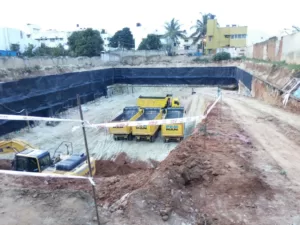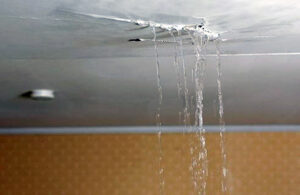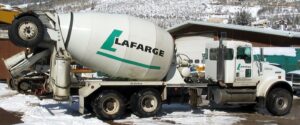Type A, Type B & Type C waterproofing system
BS8102:2009 provides a classification system for waterproofing based on the level of protection required for a particular below-ground structure:
BS8102:2009 is a British Standard for “Code of practice for protection of below ground structures against water from the ground”. It provides guidance on the design and construction of waterproofing systems for below ground structures, such as basements and underground parking garages. The standard outlines the different types of waterproofing systems and their appropriate applications, as well as the necessary design considerations, construction details, and maintenance requirements for effective waterproofing. It is commonly used as a reference by architects, engineers, contractors, and building owners involved in the design and construction of below ground structures.
BS8102:2009 provides a classification system for waterproofing based on the level of protection required for a particular below-ground structure:
- Type A (barrier protection): provides a physical barrier to water ingress using a waterproof membrane or concrete with integral waterproofing.
- Type B (structurally integral protection): provides a water-resistant structure using a combination of waterproof concrete and a drained cavity system to control water ingress.
- Type C (drained protection): allows water to enter the structure and then directs it to a drainage system to be safely removed. This is typically achieved using a drained cavity system, such as a cavity drain membrane, that collects and channels water to a sump and pump system.
Type A (barrier protection)
Type A waterproofing, also known as barrier protection, involves the use of a physical barrier to prevent water ingress. This is typically achieved through the application of a waterproof membrane, which can be either liquid-applied or pre-formed sheet. The membrane is typically applied to the exterior of the structure and is designed to withstand high hydrostatic pressure from groundwater or surface water.


Type A Waterproofing System (barrier protection)
Product: Dr. Fixit Samshield PS 2100
SBS modified bituminous membrane.
Type A waterproofing systems typically require careful preparation of the substrate to ensure that the membrane adheres properly and does not become damaged. The membrane should also be continuous and free of defects, such as holes or tears, to ensure effective protection against water ingress. In addition to the membrane, Type A systems may also include sealants, primers, and other accessories to ensure effective performance.
While Type A waterproofing can be highly effective in preventing water ingress, it can also be more expensive than other types of waterproofing due to the cost of materials and labor involved. It is often used in high-risk applications, such as basements or tunnels, where the consequences of water ingress can be significant.
Type B (structurally integral protection)
Type B waterproofing, also known as structurally integral protection, is a waterproofing method that incorporates the waterproofing system into the structure of the building. This method uses a combination of specially designed concrete mixtures, admixtures, and waterproofing membranes to create a waterproof barrier. This is typically achieved by using materials such as specially formulated concrete, masonry, or shotcrete, that can resist water penetration.


Type B (structurally integral protection)
Integral Crystalline Admix waterproofing system
The key to this method is ensuring that the concrete itself is waterproof. This is achieved by using a carefully designed concrete mixture that incorporates waterproofing additives, such as crystalline or hydrophobic admixtures, into the concrete mix. These admixtures help to reduce the permeability of the concrete, making it more resistant to water penetration.
Type B waterproofing systems are typically used in below-grade structures such as basements, tunnels, and retaining walls.
Type C (drained protection)
Type C waterproofing system, also known as drained protection, provides a means of controlling water ingress by allowing it to enter the structure and then directing it to a controlled drainage system. This system uses a combination of materials, such as a cavity drain membrane, drainage channels, and pumps to manage water ingress. Type C system is suitable for use in situations where the water table is high or where there is a high risk of flooding. It is typically used in below-ground structures such as basements and underground car parks. The drainage system must be designed to prevent blockages and to ensure that water can be discharged safely.


Type C (drained protection)
Dimpled Drain Board
Product: Drainage system DELTA -TERRAXX
GEOLIZ WATERPROOFERS PVT. LTD.
Waterproofing Products & Services Guide
For details on other waterproofing products & Services








One Comment
Comments are closed.